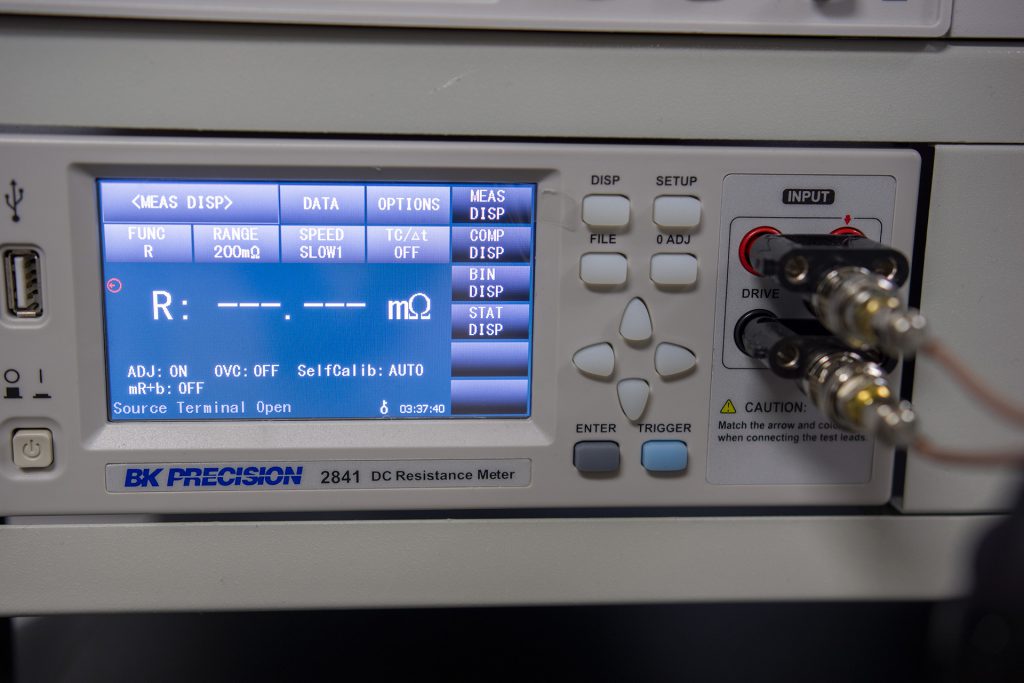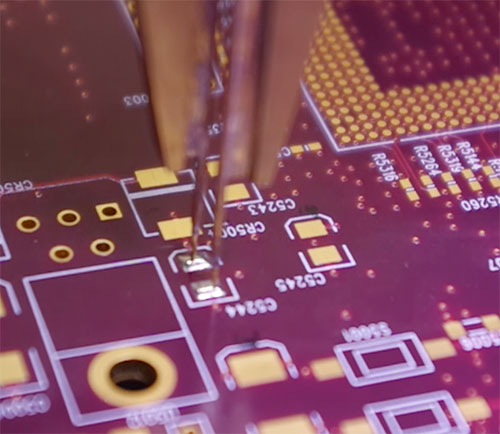Huntron Automates Short Circuit Location

Huntron Technical Support ran some experiments to locate short circuits on printed circuit boards (PCB) recently. The process included a B&K Precision 2841 Milliohm meter connected to a Huntron Access DH2 dual head Prober. The Access DH2 automated the placing of the test probes on PCB components. We created Huntron Workstation test Sequences to control the Prober movement and capture measurements from the milliohmmeter.
We built two tests, the first on a bare board with no components. The second test used a fully populated circuit card with surface mounted components.
If you want to skip the read you can watch the video!
Locate shorts circuits on a bare board

Short circuits on unpopulated PCBs can be a problem in circuit board manufacturing. We soldered a small piece of wire between two pads connecting voltage and ground bus lines. The Access DH2 Prober was used to test across several of the capacitor pads that share these bus lines. The idea was to measure the milliohm resistance values searching for the lowest measurement. The lower the measurement the closer you are to the actual short circuit location.
The results were positive in that the shorted capacitor pads had the lowest measured resistance at 24 milliohms.
Populated board short circuit location
We created a test using a PCB fully populated with components because we wanted to know if components affected the detection of short circuits. We soldered a wire across pads connected to one of the decoupling capacitors resulting in a voltage to ground short. The test measured ten decoupling capacitors with the milliohmmeter including the shorted device. The Access DH2 was used to automatically place the probes on the test points. As a result, Huntron Workstation showed that the shorted device had the lowest resistance measurement.
Huntron documented the whole process on video and have posted the story on our YouTube channel – Locating Short Circuits on a PCB using a Milliohmmeter and Huntron Access DH2 Prober

